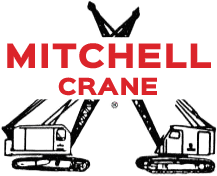Crane Overhauls & Crane Boom Repair
- Home
- Crane Services
- Crane Rebuilds
- Complete Crane Overhaul
Whether you are looking for a complete crane overhaul or a modified rebuild which addresses your needs specifically, Mitchell Crane can build a reliable machine which will produce for you for years to come.
Complete rebuilds start with a thorough inspection and some basic disassembly to determine current condition of a crane and whether there are potential issues which could render the crane unrepairable like a cracked or bent frame.
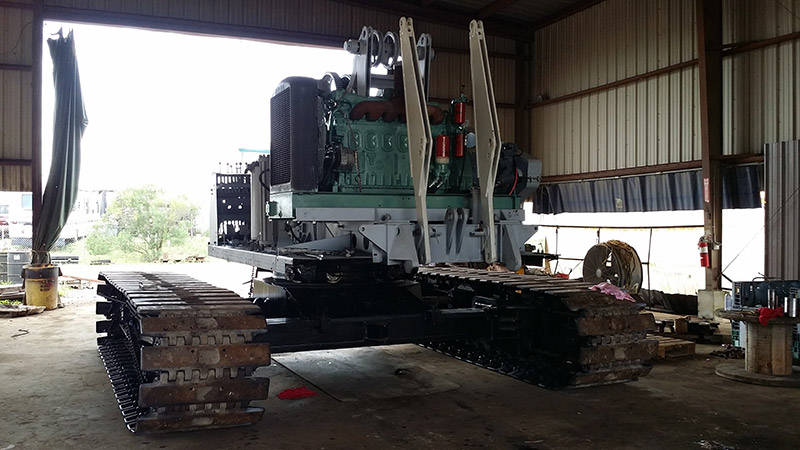
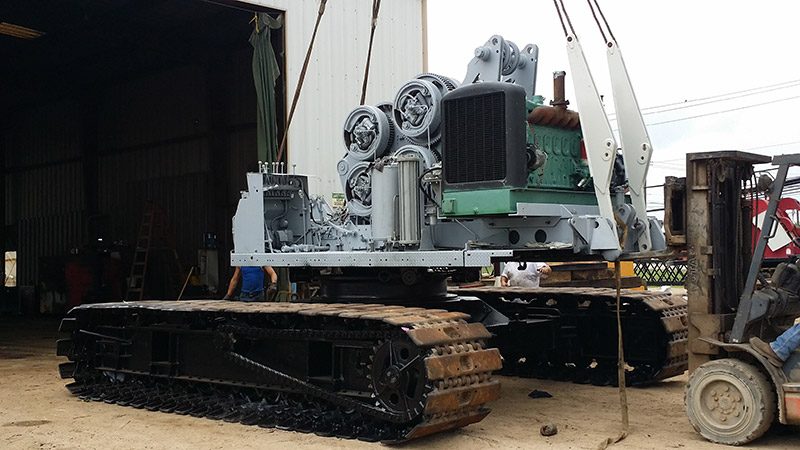
How Mitchell Crane can save you money on your next rebuild:
- Large selection of used parts to replace existing parts which are no longer usable
- Manufacturing capability to make replacement parts on site
- Experience
- Our own product lines of aftermarket crane parts in stock
- Direct access to OEM parts from both Link-Belt® and Terex® / American® Cranes
- Facilities and equipment on hand to do the job right
Steps to a successful crane rebuild:
- Tear down and evaluation of parts being removed for crane
- Thorough cleaning of entire frame and carbody
- Proper repair methods on frame, carbody and used parts
- Attention to details like cleaning threads and repairing of elongated holes
- Use of quality primers and sealers as parts are readied for re-assembly
- Use of quality new replacement crane parts
- Careful, precise and systematic re-assembly
- Continual testing of components as they are re-assembled
- Attention to finish detail of operator cab and use of quality paints
- Thorough testing of machine operation prior to delivery
Addressing the main components
Although there are very clear differences in cranes, many of the concepts concerning an crane overhaul are similar. Below is just a sample of things considered when addressing the rebuild of a crane and are not in anyway complete a rendering of all factors involved in the overhaul of a crane.
Crane overhaul is a complex process and should only be performed by a qualified mechanic with the proper training, tools and resources.
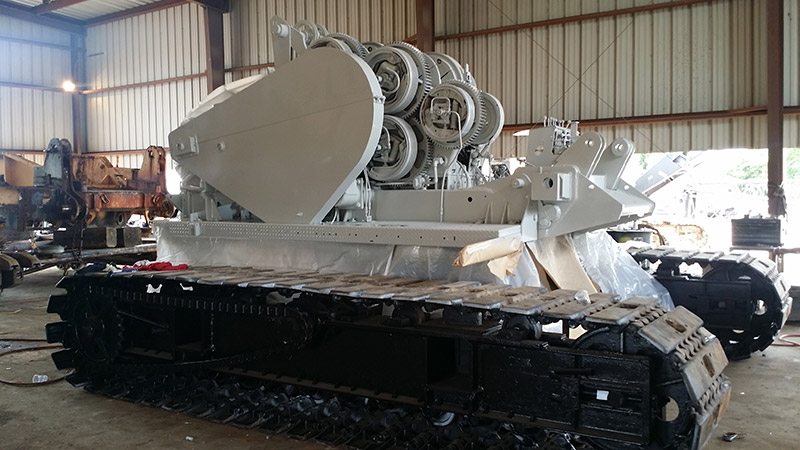
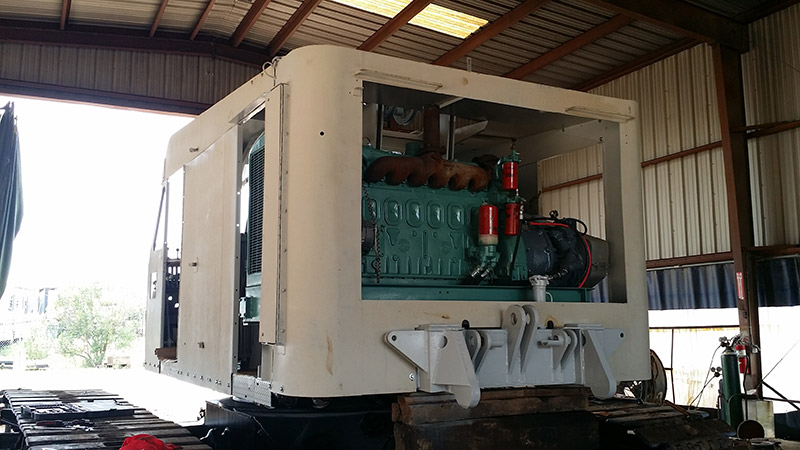
Clutches – Major functions, such as swing and hoist, of a conventional crane are controlled by air pressure or hydraulic pressure being delivered to an actuator which engages or disengages clutch frictions joined to the drive line of intended function.
Rebuild of a Clutch:
- Repair and reline clutch frictions
- Replace pins, links, springs, bushings, bearings, shims and retaining rings
- Replace air valves & rotating joints
- If repairable, replace O-rings or diaphragms in air chambers or actuator cylinders, if not repairable, replace air chamber or cylinder with new part
- Check and respline spiders as needed
Brake Bands – In order to stop or slow a particular function once in motion, like swing or travel a brake is applied initially before a positive lock can be applied if available, some times a brake is not present and operators may only apply a positive lock on swing when machine is not in use. This set-up is mostly seen on duty-cycle machines.
If bands have excessive pitting from rust or are misshaped we will replace the band with a new one or another good used band which has already been repaired.
Brake Band Repair:
- Remove old lining and evaluate condition of material and for proper arc
- Repair elongated holes
- Clean and paint
- Replace linings with proper lining material
Hook Rollers and Load Rollers – Older conventional cranes use a series of hook rollers and load rollers to allow the upper revolving frame to rotate while securely attached to the lower car body. Proper fit is crucial because these rollers are key players in the stability of a crane during a lift.
Roller, Shaft & Brackets:
- Rollers are checked for Size against the turntable, roundness and material condition and replaced as needed
- Bearings or bushings are replaced
- Axels are checked for wear and fit they are replaced as needed
- Frame and roller brackets are checked for proper hole sizes and repaired as needed, in some cases are replaced
Travel – Crawler cranes run on tracks and these components take the weights and pressure not only of the load being lifted but of the entire machine as well. Proper maintenance is vital to the longevity of these components and typically they show the most wear. Unlike some other components of a crane, nearly everything on a side frame is safely reusable with a little time and effort put into their restoration.
Crawler Side Frames:
- Side frames are stripped and all imperfections are repaired. Most of this repair is welding build-up of worn areas, hole cleaning and thread tapping.
- Bearing blocks are repaired or replaced as needed, new bushings are installed
- Drive sprocket housings are removed and repaired with new bushings holes are fixed, sprockets are re-splined or replaced as needed
- Drive tumbler assemblies are disassembled, drive tumbler and sprockets are repaired on the OD, re-splined and a new shaft is installed
- Upper and lower rollers are typically replaced with new unless the used rollers are in particularly excellent condition
- Track pads will have the lugs welded back to proper size and location, connecting pins are replaced with new oversized pins for extended life
Gears and Shafts – The backbone of your crane, nearly every function will have a shaft or gear associated with it and proper fit and performance of all gears and shafts ensures safety and extends the life of the crane.
Gear and Shaft Assessment:
- Removal and cleaning of all gears and shafts
- Inspection per print and checking for fit with new mating part
- Tolerances are key, if key dimensions are found out of tolerance the part in question is evaluated for a repair and or re-machining, if the circumstances are favorable the part will be repaired, if not it will be replaced with new or another used part in better condition
Gantry Components – Perfect triangles and a combination of quality parts are key factors in a cranes ability to lift its maximum load safely, no short cuts should ever be permitted in crane repair, this is absolutely paramount when repairing gantry components.
Gantry, Bails and Sheaves:
- Gantry pieces are removed and checked for straightness and material quality, they are properly repaired or replaced as needed
- Bails are Disassembled and Checked for Material and Weld Integrity
- Holes are Checked for Roundness and Properly Repaired
- Sheaves are Evaluated for Proper Radius and Integrity for Bearing or Bushing Replacement, they are Repaired or Replaced as Needed
- Axel Pins are Checked for Wear and Replaced as Needed
Operator Cabin – When competing for business a good looking machine can be a great advertisement and speaks to the quality of work you do.
Cabin Pieces and Finish:
- Pieces are typically sandblasted to bare metal and material is then evaluated for quality
- Holes are repaired, surfaces are sanded and fillers added as needed
- Quality industrial primers and two-part paints are used to apply a rugged long lasting finish
- A factory look is achieved with proper color and OEM decals
Boom – Suspended loads are only as safe as the boom holding them up. Boom repair is only done by qualified professionals and many factors are considered when repairing boom.
Boom Inspection:
- Used boom is inspected by a certified boom Inspector
- Specific criteria must be met prior to certifying a piece of boom for use
Power Plant – An engine is the driving force behind your crane and can be a regularly maintained component of your crane which never causes any problems or it can be a daily headache jeopardizing safety and impeding productivity.
Engine Repair:
- Engines are removed and disassembled
- Typically all engines go through a complete overhaul replacing seals, bearings, sleeves, pistons and main bearings
- Injectors are tested and replaced as needed
- Torque converters are sent out to be rebuilt by specialist
- Engines and torque converters can be dyno tested for performance
